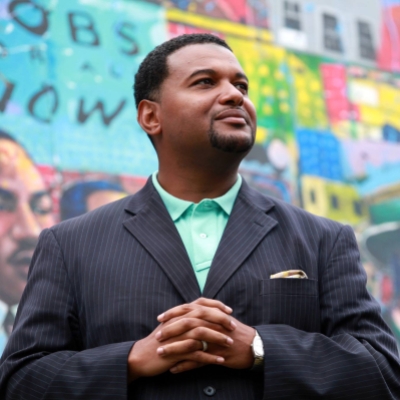A Changing Climate Means A Changing Society. The Island Press Urban Resilience Project, Supported By The Kresge Foundation And The JPB Foundation, Is Committed To A Greener, Fairer Future. This Op-Ed Was Originally Published December 31, 2018 In U.S. News & World Report.
2018 has been full of grim climate news. There was the October Intergovernmental Panel on Climate Change report, which said we have a dozen years to cut carbon emissions in half to avoid catastrophic climate change. In November the U.S. National Climate Assessment showed that long-dreaded impacts of a warming world – monster storms, devastating droughts, rising seas – are now a current reality. Just this month we learned that carbon emissions are again headed in the wrong direction, after a few years of leveling off, and the U.N. climate talks closed in Poland without much progress toward reversing these trends.
But 2019 could be the year we turn this around. That will require a new approach to climate leadership, motivated by concern for health, justice and equity. And, importantly, it will require us to stop thinking that climate action pits the future against the present.
We will have to see climate change differently from the way the media typically presents it. As Charles Lane wrote recently in The Washington Post, "It's not easy to persuade citizens of a democracy to accept real financial sacrifice in the here and now for the sake of a diffuse benefit in the future." But this perspective misses the real and present danger of a changing climate – to our health, our economy and our personal safety. And it misses the benefits that climate action can bring to our cities right now.
2019 could be the year of the climate pivot, where we mobilize around the immediate dangers of a warming world and the immediate benefits of actions to limit climate pollution.
Consider this: When young people from low-wealth communities are hired to insulate homes in their neighborhoods, greenhouse gas emissions fall, people who have been excluded from economic opportunity on the basis of race or ethnicity have opportunities to build wealth, and residents have their monthly utility bills reduced, stretching each paycheck further.
When cities are redesigned for biking and walking, fewer greenhouse gases are emitted from vehicles, small businesses on those walkable streets gain increased local spending, residents benefit from active lifestyles and the health system saves money as diseases associated with lack of physical activity decline. These effects can be huge: research reported in the British Medical Journal found that people who commuted to work by bicycle had a 52 percent lower risk of dying from cardiovascular disease.
When urban areas are greened, physical and mental health improves, air pollution is reduced, storm-water flood risks recede, and energy is saved, both for heating and cooling. A 2005 studyof urban tree planting found that the value of these additional benefits ranged from $31 to $89 per dollar spent on planting trees. A Green New Deal could also be a darn good deal!
Indeed, those who say that the cost of climate action is too high probably aren't tallying the costs of the current system. A new report from the World Health Organization observes that "the health burden of polluting energy sources is now so high, that moving to cleaner and more sustainable choices for energy supply, transport and food systems effectively pays for itself."
We don't have to choose between the present and the future. The right investments in climate action can improve public health, create jobs and improve the quality of life in our cities today. But to capture these benefits, we'll need to think and act differently.
First, to get the most benefit from climate investments, resources and decision-making authority must flow to those who are at greatest risk in a warming world. These "frontline" communities, which have often been excluded from prior generations of infrastructure investment, deserve a first and final say in shaping their future. And in order to achieve climate targets, virtually every home, neighborhood and business will have to be upgraded and connected to new infrastructure. Empowered local leaders will be key to delivering that.
We need to guard against unintended consequences, such as the gentrification that often accompanies sustainability investments. New parks, public transit and clean energy make neighborhoods more desirable and rents more expensive. Policies and investments to prevent gentrification must be central to climate action, so that all residents of our communities can afford to live near new low-carbon, high-efficiency amenities.
And we must find new ways to integrate jurisdictional and budgetary silos. Currently it can be difficult to direct funding meant for health or jobs toward climate projects, even when those projects are designed to improve health and provide good local jobs. We'll need to find new ways of budgeting and build new and deeper partnerships between sectors.
At this moment of climate desperation, investments that link health, equity and human well-being with climate protection are our best hope. The need is urgent, so let's turn – with the turning of the year – in a bold direction, integrating the highest standards of equity and justice with the highest climate ambitions. Let's seize every opportunity to improve people's lives today in ways that protect the climate for the future.


